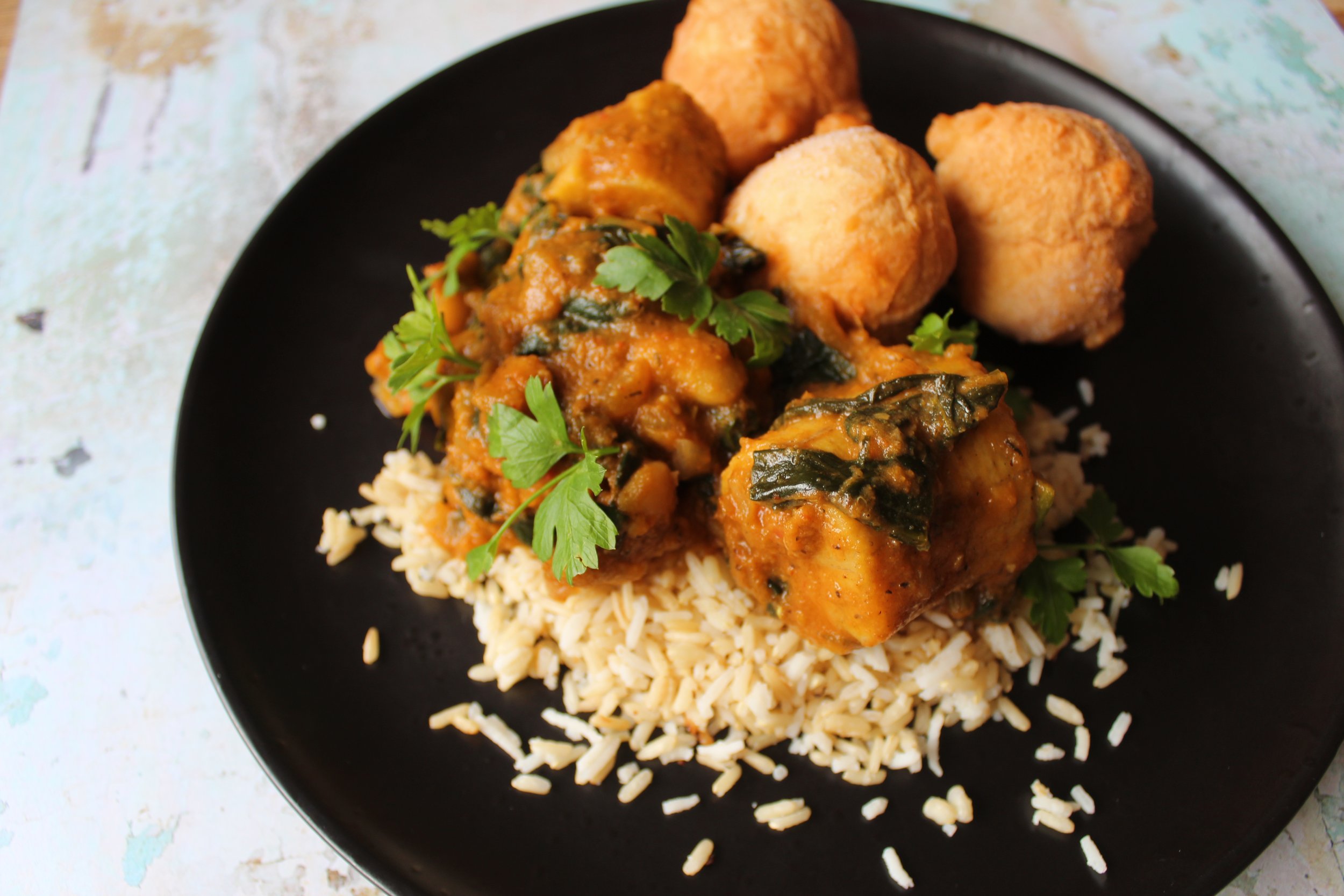What Are Plantains? A Brief History & How To Use Them
You might be thinking, "Wait, isn't that just a banana?" Well, you're not entirely wrong, but there's so much more to this tropical treasure than meets the eye. Let’s explore the fascinating history of plantains, learn how to differentiate them from their close cousin—the banana, and share some tips on how to enjoy this versatile fruit. We also share a personal recipe that highlights the delightful flavours and textures plantains have to offer!
What's The Difference Between Plantain & Bananas?
While it's true that plantains and bananas share the same botanical family, Musaceae, they're actually distinct fruits. The primary differences between the two lie in their taste, texture, and culinary uses. Plantains are usually larger, starchier, and less sweet than bananas, with a thicker skin that's usually green or yellow, sometimes black when ripe. They're also more commonly used in cooking, often consumed fried, baked, or boiled, unlike bananas, which are typically eaten raw.
A Brief History of Plantains
Plantains boast a rich and storied history spanning thousands of years. Originating in Southeast Asia, these versatile fruits made their way to Africa approximately 3,000 years ago. Their journey to Africa likely occurred through ancient trading networks or as a result of human migration. Once in Africa, farmers cultivated and embraced plantains as a dietary staple across various regions, where they became an integral part of local cuisines.
In the late 15th and early 16th centuries, European explorers and colonists, including the Portuguese and Spanish, introduced plantains to the Americas. The fruits quickly gained popularity, and before long, plantains became a beloved ingredient in the Caribbean, Latin American, and African culinary traditions. Each region developed its own distinctive ways of preparing and enjoying plantains, further contributing to the fruit's widespread appeal.
Today, plantains continue to be a cherished ingredient in countless dishes across the globe. Their versatility and adaptability to different cooking methods have inspired an array of recipes that celebrate the unique flavours and textures that plantains bring to the table. From sweet to savoury dishes, the humble plantain has transcended geographical and cultural boundaries, carving out a special place in the hearts and kitchens of people from all walks of life.
Plantain Ripeness
If you're new to the world of plantains, it's understandable to feel a bit puzzled about how to choose, prepare, and enjoy them. One key factor to consider when working with plantains is their ripeness. The level of ripeness affects not only the flavour and texture but also the culinary applications. So let's dive into the different stages of ripeness and what you can do with plantains at each stage!
Photo by Ngwafu Tansie
Green Plantains (Unripe)
When plantains are green, they are firm, starchy, and have a subtle, earthy flavour. At this stage, they are typically used in savoury dishes. Here are some popular ways to cook green plantains:
● Tostones: Double-fried plantain slices, served with a garlic dipping sauce or sprinkled with salt.
● Plantain chips: Thinly sliced plantains, fried until crispy, and seasoned with salt.
● Green plantains are ideal for soups, stews, chips, and boiling to achieve a firm texture.
2. Yellow Plantains (Semi-ripe)
As plantains ripen, their skin turns yellow, and they become sweeter and softer. Yellow plantains are great for dishes that require a balance between sweet and savoury. Some delicious options include:
● Maduros: Sweet, fried plantain slices that caramelise as they cook, resulting in a deliciously tender and sweet treat.
● Stuffed plantains: Hollowed-out plantains filled with seasoned beans, and baked or fried.
● Yellow plantains can be fried, grilled, or baked. While boiling makes them mushy, they're excellent for blending in cake recipes.
3. Black Plantains (Fully ripe)
When plantains are fully ripe, they have a black skin, and their flesh is soft and sweet. This stage is perfect for desserts or sweet snacks. Try these delightful dishes:
● Plantain fritters: Ripe plantains mashed with sugar, flour, and spices, then deep-fried for a tasty treat.
● Plantain bread pudding: A twist on the classic bread pudding, using ripe plantains and spices like cinnamon, nutmeg, and cloves.
● Black plantains are perfect for baking as a direct banana substitute or as a vegan "egg" replacer. Avoid frying, as they become too soft and greasy.
Understanding the different stages of plantain ripeness and their respective culinary uses will open up a world of possibilities in your kitchen. Don't be afraid to experiment and discover new ways to enjoy this versatile fruit!
Tips and Tricks for Cooking With Plantains
Peeling plantains can be a bit tricky due to their thick skin. To make it easier, slice off both ends, make a shallow cut lengthwise along the ridges, and use your fingers to gently peel away the skin.
Green plantains can be quite sticky once peeled. To avoid a mess, rub some oil or wear gloves while handling them.
When frying plantains, ensure that the oil is hot enough to avoid soggy results. You can test this by inserting a wooden spoon into the oil—if it bubbles around the spoon, it's ready for frying.
Get creative! Plantains can be used in various dishes, from appetisers to desserts. Experiment with different cooking techniques, like grilling, baking, or even mashing them to make a delicious plantain-based dough.
How I Use Plantains
At GwafuVegan, we incorporate plantains into our dishes for markets and supper clubs! One of our signature dishes is a scrumptious spinach stew, where plantains are prepared in a variety of ways. For markets it’s usually fried, but in supper clubs it is baked, steamed, or boiled.
This dish provides a well-rounded meal, beautifully combining the savoury elements of the spinach with the natural sweetness of the plantain. It's a fan favourite, and we're proud to share this delectable fusion of flavours with our guests. It’s also certainly one of my favourites too!
Do you fancy trying our Stewed Plantain Recipe?
Photo by Ngwafu Tansie
Kondres (stewed plantains) is a very popular Cameroonian one-pot dish. Consisting of fresh herbs and spices, this deep flavoured and well seasoned dish is sure to get your taste buds tingling! It’s a great accompaniment with any other dish, or just served with rice! You can find the recipe for Kondres here!
Let’s Summarise
In conclusion, plantains are a versatile and delicious fruit that deserves a spot in your culinary repertoire. Though they may resemble bananas, plantains have a unique flavour, texture, and range of applications that set them apart. Their rich history, spanning from Southeast Asia to Africa, and eventually to the Americas, has led to their widespread popularity in many cuisines around the world.
By understanding the various stages of ripeness and their respective culinary uses, you can unlock the full potential of this tropical treasure. So, whether you're trying a beloved dish like gwafuvegan's spinach stew, experimenting with Kondres stewed plantains, or discovering new ways to cook plantains at home, the possibilities are endless. Embrace the world of plantains and let your taste buds embark on a delightful journey of flavours and textures!
I’d love to see your meals incorporating Plantain after learning more about it on this blog! Please tag me in your pictures on Instagram, you can find me here: @gwafuvegan
gwafuvegan specialises in cooking and delivering affordable vegan West African food.
We ensure to only use high-quality, sustainable produce that is locally sourced.
Our number one aim is to spread our love of vegan food and our passion and love of West African food. By doing this we showcase new and exciting flavours to our ever-growing diverse community.
What we are currently getting up to:
● Popping up at food markets in and around Manchester. All our up and coming market dates are below.
● Selling Puff Puff boxes (sweet doughnut-like balls) - through our website - Uk wide delivery.





